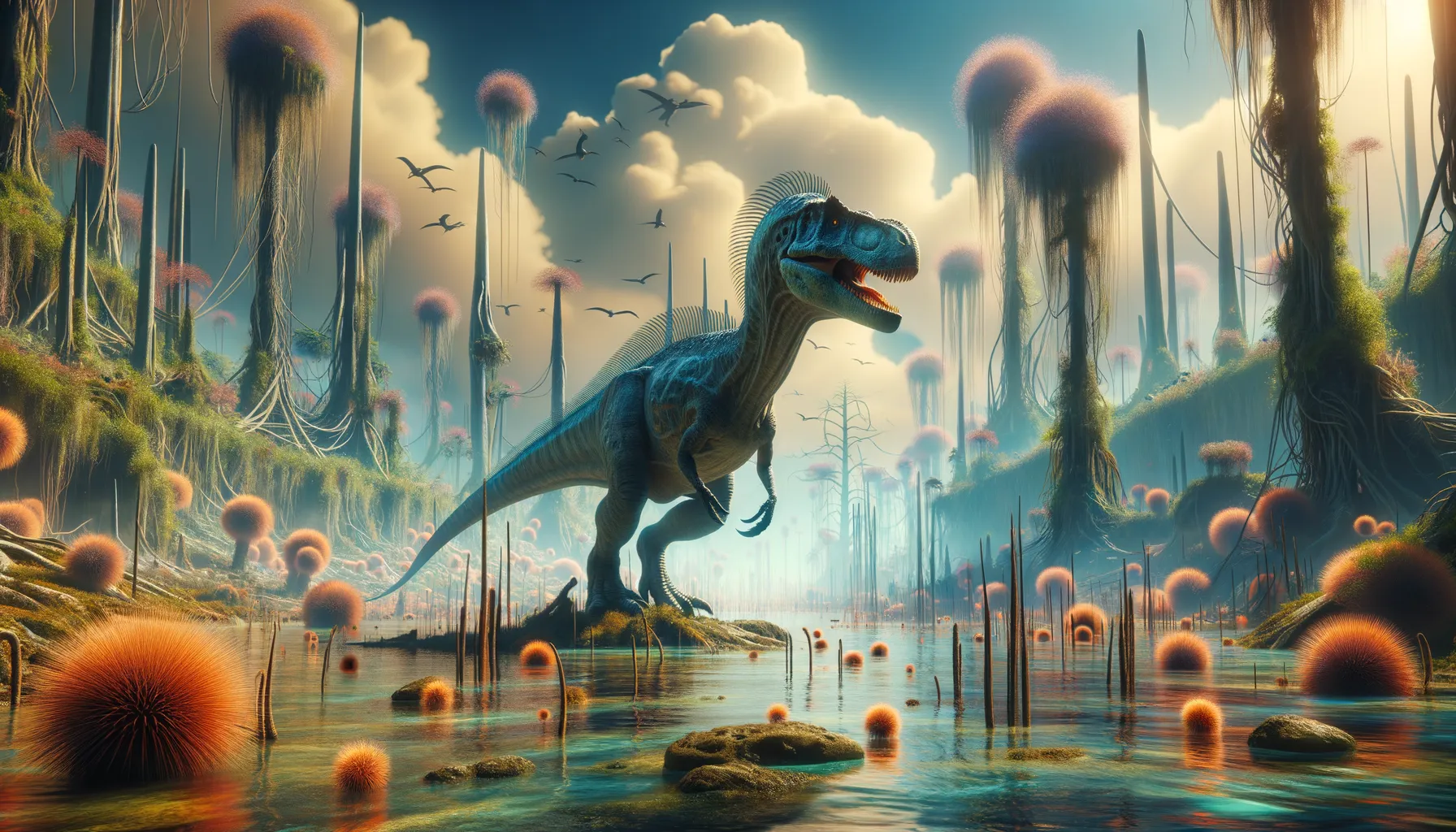
Paleosaurus
Mysterious beginnings in dinosaur history.
Period
Triassic
Length
Potentially several meters from head to tail.
Height
Roughly estimated at a few meters tall.
Weight
Estimated to be several hundred kilograms.
Paleosaurus is a name given to a poorly understood dinosaur whose remains are fragmentary and not thoroughly classified. Initially thought to be a type of Triassic reptile, its classification has been debated, with suggestions that it might not represent a valid dinosaur genus at all. Though often omitted from modern lists, it remains a point of interest for some paleontologists and historians who study early scientific discovery practices.
Diet
Little is known about its diet due to uncertain classification. It is often thought to be herbivorous, feeding on available vegetation during its time.
Hunting
No specific data on hunting as its classification is debated. It may not have been a true predator, implying limited hunting instincts.
Environmental challenges
The environment during the Triassic could be volatile, with climates transitioning from moister to more arid conditions. Paleosaurus, or what it might have represented, faced challenges from evolving ecosystems and competition with other emerging reptiles. Its ability to adapt would have been crucial for survival amidst these dynamic changes.
Speed
Varied significantly due to limited data.
Lifespan
Unclear due to lack of specific details.
First discovery
First described in the early 19th century.
Fun Facts
- Paleosaurus was first discovered in England in the early 19th century, making it one of the earliest described dinosaurs.
- Despite its name, Paleosaurus isn't a true dinosaur as we understand them today; it's actually considered a nomen dubium, meaning its classification is uncertain.
- The name Paleosaurus means 'ancient lizard,' reflecting the early views of reptiles during its discovery period.
- Paleosaurus fossils are fragmentary, consisting mainly of teeth and limb bones, which leaves much of its biology a mystery.
- The debate over Paleosaurus's classification highlights the challenges paleontologists face in identifying and categorizing prehistoric life.
- Some researchers believe that the fragments attributed to Paleosaurus may actually belong to another dinosaur species that lived during the same period.
- The story of Paleosaurus reminds us of how scientific knowledge evolves over time as new discoveries are made.
Growth and Development
As details of Paleosaurus' development are speculative, insights must be drawn from similar Triassic creatures. These organisms would experience growth spurts, developing skeletal structures supportive of a land-dwelling lifestyle. Juvenile and adult stages would differ significantly in size and mobility.
Habitat
Likely resided in semi-arid regions with access to river systems. Its environment would include a mix of open plains and forested areas. Being a Triassic creature, it had to adapt to specific vegetative landscapes.
Interaction with other species
Bearing in mind its uncertain status, interactions with other Triassic creatures could range from competitive to coexistent. If it was herbivorous, it might have been prey for larger predators. Its niche interactions would contribute to the broader ecological tapestry of its era.
Natural lifespan
Details remain speculative without concrete fossil records.
Reproduction
Reproductive habits are unknown, although egg-laying is likely, similar to other Triassic reptiles. Parenting behaviors are also speculative, potentially ranging from minimal involvement to more complex nurturing.
Social behaviour
Social behaviors are hard to determine without concrete classifications. If gregarious, they might have formed small groups for foraging. Otherwise, solitary existence reflecting less interaction with conspecifics is possible.
Fossil locations
Initial discoveries were in Britain during the early 1800s. These remains were fragmentary and have since sparked taxonomic debates. Despite historical mentions, it remains largely absent from curated museum collections today.
